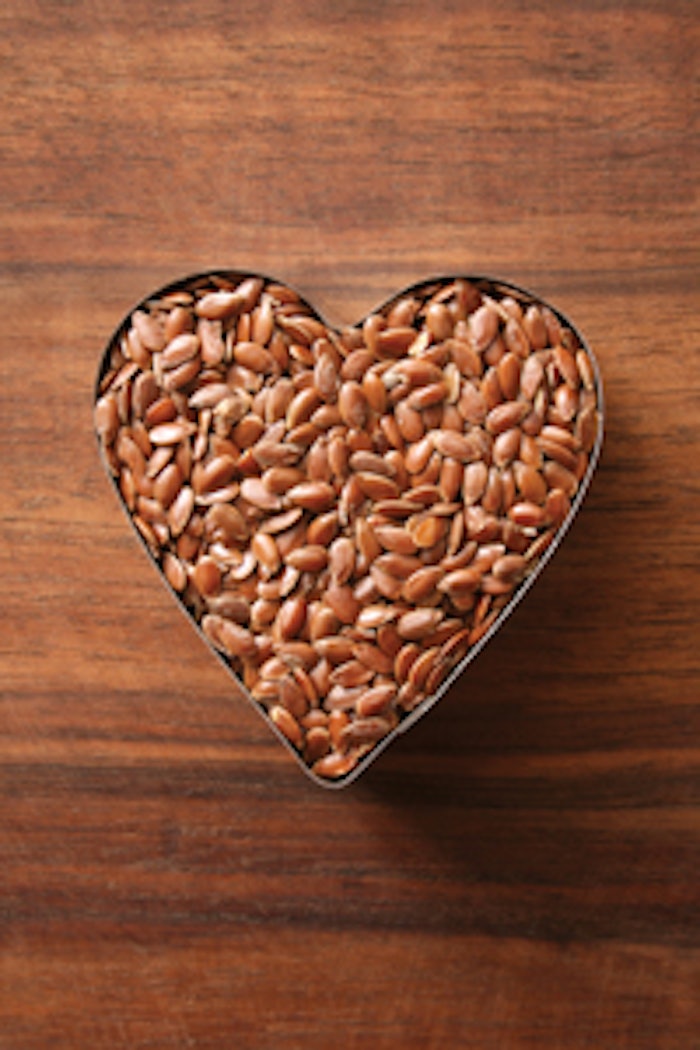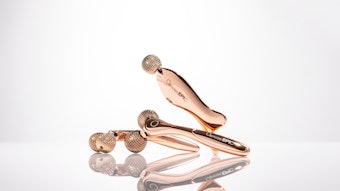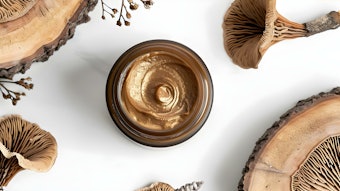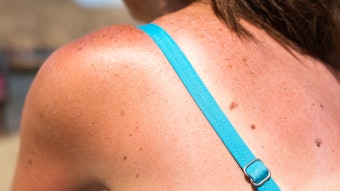
Ever since I became a mom, I always think of flaxseed as an incognito health boost for my kids. One of the best secrets I learned early on after my kids started eating solid foods was that flaxseeds were delicious but had a neutral-enough flavor that I could sneak them into other foods without them noticing. Little do they know there are flaxseeds in their spaghetti sauce and in those sloppy joes they love. It’s my secret, but this little seed has a big impact on a person’s health.
Flaxseeds grow from the flax plant, which has narrow leaves and blue flowers, and is also the source of the fabric linen.1 Flaxseeds are particularly rich in alpha lineolic acid, an omega-3 fatty acid believed to be helpful in lowering cholesterol, as well as vitamins, minerals, potassium, and soluble and insoluble fiber.1, 2 They also contain lignans, a type of phytoestrogen that may protect against certain types of cancer.2 This omega-3 fatty acid content also helps skin protect itself by increasing natural oils, keeping skin soft and preventing it from drying out.3
In the kitchen
Flaxseeds have a warm, earthy, nutty flavor, and are eaten either whole, ground or in the form of oil, which can be added to cooked food for a health and flavor boost. They are slightly larger than sesame seeds and have a smooth, shiny shell, varying in color from deep amber to reddish brown, depending on the variety. Ground flaxseeds are convenient, but be sure that they are packaged in a vacuum-sealed package and refrigerated after opening to avoid spoilage. Whole flaxseeds are usually prepackaged and have a longer shelf life than ground flaxseeds.4 Flaxseeds are commonly used in baked goods, such as crackers, breads, cakes and muffins, and they can also be used in juice drinks and smoothies, and sprinkled on salads and breakfast cereals.1
Spa cuisine chefs have been aware of the benefits of flaxseeds for years. Following are some examples of the use of flaxseeds in spa cuisine:
Persimmon and Pineapple Smoothie—Lake Austin Spa Resort, Austin, Texas;
Unbaked Pumpkin Yogurt Cheese Pie—Rancho La Puerta, Tecate, Baja California, Mexico;
Grains & Fruit Cookie—Marc Allan’s Men’s Club & Spa Ltd., Sydney, Nova Scotia, Canada;
Flax Energy Smoothie—Kohler Waters Spa, Kohler, Wisconsin;
and Low Fat Blueberry Banana Bran Muffins—See the recipe from Director of Nutrition Paulette Lambert of the California Health & Longevity Institute in Westlake Village, California.
In the spa
Although omega-3 fatty acids are essential for normal skin and body function, they aren’t produced naturally and must be introduced to the body through the diet.3 Flaxseed oil can be applied directly to the skin to help lock in moisture and can improve a dry, dull complexion. The omega-3 fatty acids found in flaxseeds are also anti-inflammatory, meaning they can help minimize redness and skin irritation.3
Many spas use flaxseed as a cure-all due to its multiple skin benefits in a variety of services, including:
The Laka, an antioxidant face and body mask and scrub that includes flax, organic green tea and hemp—The Spa at the Kona Village Resort, Kailua-Kona, Hawaii;
The Ideal Controle Facial balances purity and softness, using flax extract to rebalance and hydrate skin—The Spa at Lucknam Park, Lucknam Park Hotel and Spa, Bath, England;
The Anti-Aging Flax Facial—The Cannery Day Spa at The Cannery Pier Hotel, Astoria, Oregon;
The Power Mani and Pedi exfoliates and purifies skin using flaxseeds, walnut, crushed bamboo and sea salt—Penterra Spa at The Heathman Hotel, Kirkland, Washington;
The Flax Anti-Aging Facial stimulates the production of collagen and elastin—Spa Soak, Chicago;
The Antioxidant Body Wrap feeds skin with moisture and heals, using flaxseed oil and zinc oxide—The Spa at Spruce Point, Boothbay Harbor, Maine;
The Omega-3 and Babassu Body Envelopment nourishes and revitalizes, beginning with a flaxseed sugar scrub—Serenity Wellness Spa, Milledgeville, Georgia;
The Organic Therapeutic Seaweed Massage and Soak blends flax with wild organic seaweed, pumpkin and olive oil to relieve tired, achy muscles—Drift Spa at Black Rock Oceanfront Resort, Ucluelet, British Columbia, Canada; and
The Detoxifying Back Treatment—See the step-by-step how-to from Escape Day Spa and Salon, Nashville, Tennessee.
Flaxseed’s multiple skin care benefits are also utilized in a variety of skin care products.
Phytomer’s Ogenage Excellence is a soothing cream that helps densify the epidermis and improve its elasticity and radiance, using flaxseed oil.
Szép Élet’s ilike organic skin care’s Phytoestrogen Moisturizer contains flaxseed to help balance androgen hormone activity while smoothing and firming.
Sundari’s Omega-3 and Flaxseed Body Exfoliator gently exfoliates, renews and nourishes the skin.
Jane Iredale’s Facial Blotting Papers are made from organic flaxseed for absorbency.
And Éminence Organic Skin Care’s Eight Greens Whip Moisturizer uses flaxseed for its omega-3 content to provide a natural phyto-hormone boost.
A powerhouse
Despite its miniature stature, flaxseed is a powerhouse that is jam-packed with nutrients and features a nutty, pleasant flavor, making it a health food that you want to eat. Besides providing benefits internally, flaxseed addresses a variety of skin care concerns, as well. Show your clients how big things can come in small packages and introduce them to the wonders of flaxseed.
References
1. www.jeffersoninstitute.org/flax.php
2. https://www.flax.com/Section/Flax_Facts/Flaxseed_-_A_Smart_Choice.html
3. thedermblog.com/2008/06/06/flax-seed-oil-and-your-skin
4. www.whfoods.com/genpage.php?tname=foodspice&dbid=81
(All accessed Mar 12, 2010)










